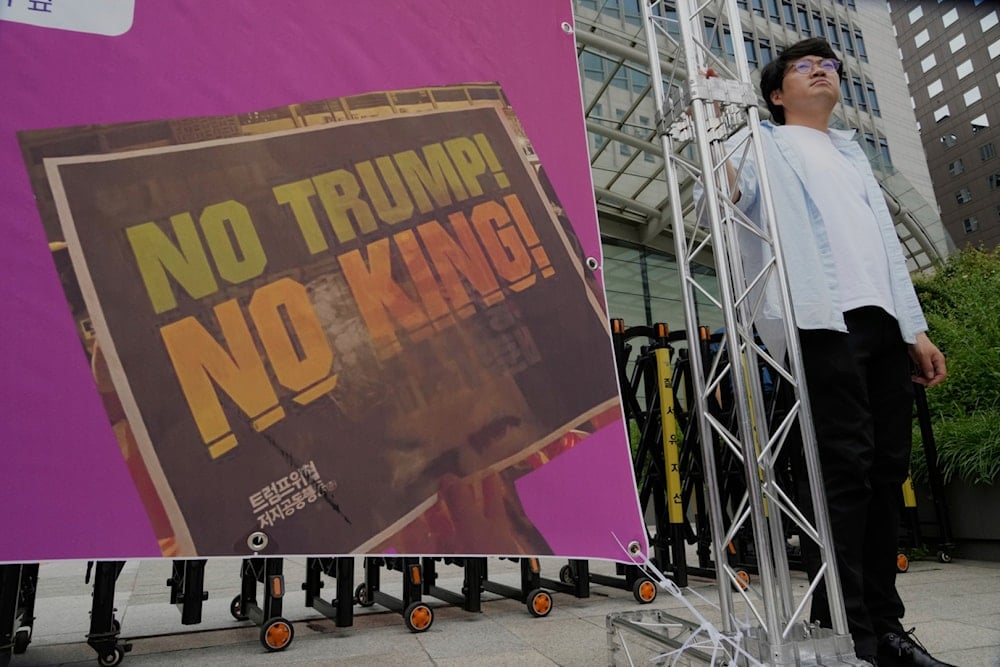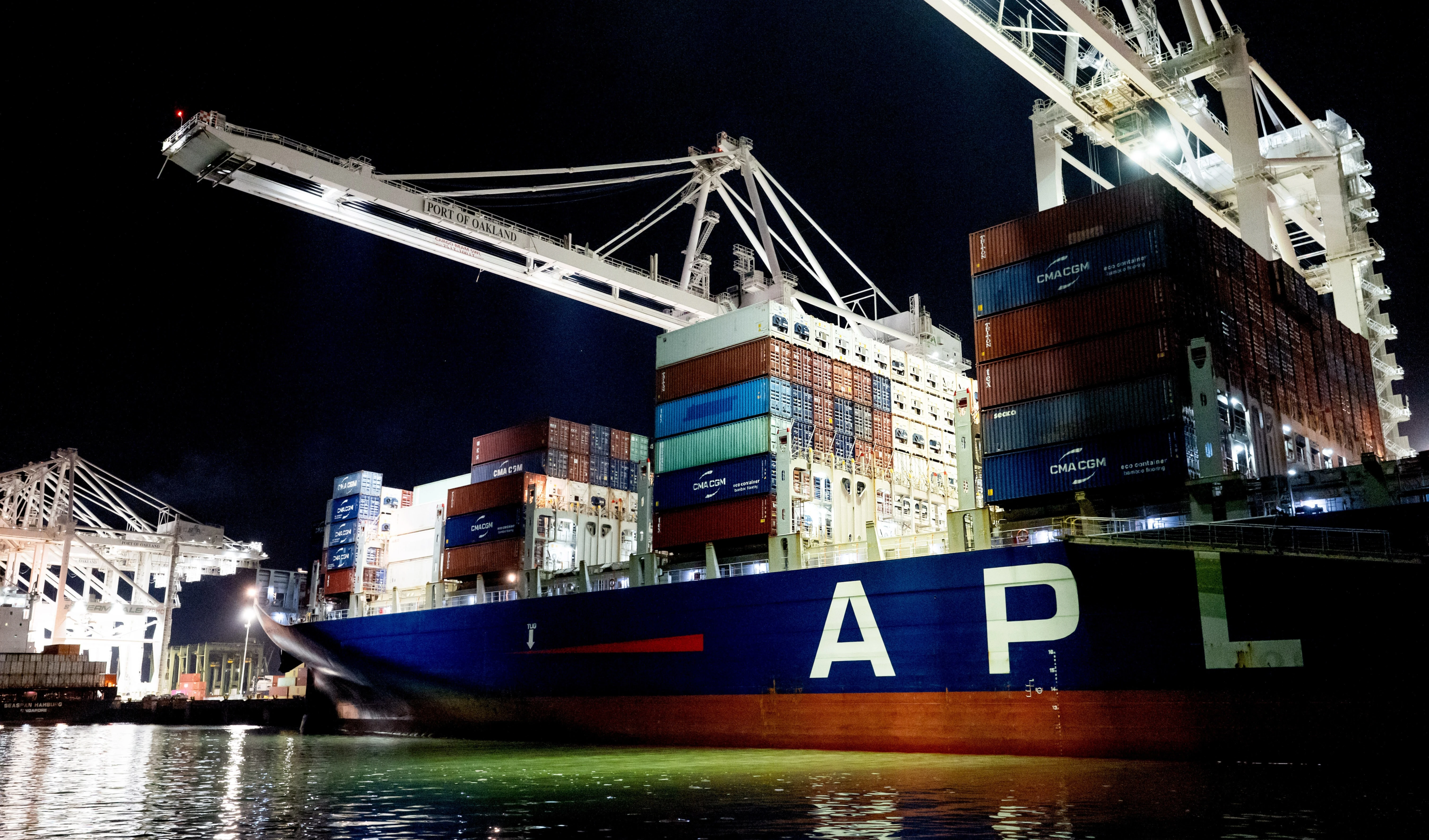Trump imposes 25% levies on East Asia allies, threatens BRICS with 10%
Trump managed to levy 25% tariffs on Japan and South Korea, threaten BRICS nations, and shake international markets.
-

A member of civic groups attends a rally against US President Donald Trump's tariff policy in Seoul, South Korea, Monday, June 30, 2025 (AP)
US President Donald Trump has announced sweeping 25% tariffs on all imports from Japan and South Korea, effective August 1. The new tariffs were revealed in near-identical letters sent to both governments and posted to Truth Social. Trump warned that any retaliatory measures would be met with equivalent increases. “If for any reason you decide to raise your tariffs, then whatever the number you choose to raise them by will be added onto that 25%,” he wrote.
The move came as part of a broader tiered tariff rollout: 30% for South Africa, and 40% for Laos and Myanmar, while Malaysia and Kazakhstan joined Japan and South Korea in facing 25% levies. In total, 14 countries received tariff warning letters on Monday, with dozens more to follow later this week, according to the White House.
Despite an earlier July 9 deadline, Trump signed an executive order extending the 90-day pause first introduced in April, effectively giving trading partners until August 1 to strike deals or face penalties.
"This is Liberation Day. April 2nd, 2025 will forever be remembered as the day American industry was reborn, the day America's destiny was reclaimed, and the day that we began to make America wealthy again," US President Donald #Trump declared moments before he announced tariffs… pic.twitter.com/dau4mO9Wxe
— Al Mayadeen English (@MayadeenEnglish) April 2, 2025
Markets rattle as trade tensions escalate
In the United States, the Dow fell 456 points (1.02%), while the S&P 500 and Nasdaq also slid nearly 1%. Meanwhile, in East Asia, Japan’s Nikkei 225 and South Korea’s Kospi dipped 0.26% and 0.48%, respectively. The Korean won dropped 1.1%, its lowest level in two weeks, as currency traders dumped assets from Trump-targeted economies.
While Wall Street has absorbed months of tariff noise, analysts warn the uncertainty is deepening, especially for importers and multinational manufacturers with complex Asia-based supply chains.
Japan, South Korea hit where it hurts: Auto industry
The tariffs strike directly at the industrial cores of both nations. Japan’s auto industry, responsible for 8.3% of the national workforce and nearly $420 billion in annual exports, faces a crisis. Prime Minister Shigeru Ishiba called the tariffs a “national emergency” and vowed not to “easily compromise". Automakers like Toyota and Honda are bracing for $19 billion in losses this fiscal year alone.
South Korea’s Hyundai and Kia, which sold 1.7 million cars in the US last year, risk losing 4.9 trillion won ($3.6 billion) in 2025 alone. Both firms have launched aggressive discount campaigns, cutting prices by up to $16,900 per vehicle, to retain US market share.
Governments are scrambling to cushion the blow: Seoul has unveiled a ₩3 trillion ($2 billion) emergency package for automakers, while Tokyo is preparing stimulus measures after its economy contracted in Q1 2025.
Trump vs. BRICS: A new trade front
Beyond East Asia, Trump’s trade offensive now targets countries aligned with BRICS. In a Truth Social post, he warned that any nation “aligning with the Anti-American policies of BRICS” would face an additional 10% tariff.
The threat came as BRICS leaders wrapped up a summit in Rio de Janeiro, where they issued a joint statement condemning “unilateral tariff and non-tariff measures.”
In a pointed rebuke, Brazilian President Luiz Inácio Lula da Silva declared, “We are sovereign nations. We don’t want an emperor.”
The 11-member bloc, now expanded to include Iran, the UAE, Egypt, Ethiopia, and Indonesia, represents nearly 40% of global GDP and half the world’s population. While Trump did not name specific countries, India, South Africa, and Brazil, each in negotiations with Washington, now face growing uncertainty.
A shifting trade order?
As the US becomes an increasingly unreliable trading partner, regional blocs and emerging economies may head to China and the European Union for alternative trade routes. Chinese President Xi Jinping is expected to meet Southeast Asian leaders later this month, positioning Beijing as a stabilizing force amid US disruption.
Despite promises of “90 deals in 90 days,” Trump has secured only three: with the UK, Vietnam, and a temporary framework with China, set to expire in mid-August. Talks with Japan have reportedly stalled, with Trump telling aides, “It’s easier to send a letter. Take it or leave it.”
Trump’s escalating trade war, now expanded to US allies, BRICS-aligned states, and even NATO partners, represents a sharp break from post-war global economic norms. Whether these tactics yield the “best deals possible,” as the White House insists, or ignite a global trade realignment, will depend on what happens before August 1.
But as Lula warned, the world’s emerging economies are no longer playing by imperial rules.

 5 Min Read
5 Min Read










